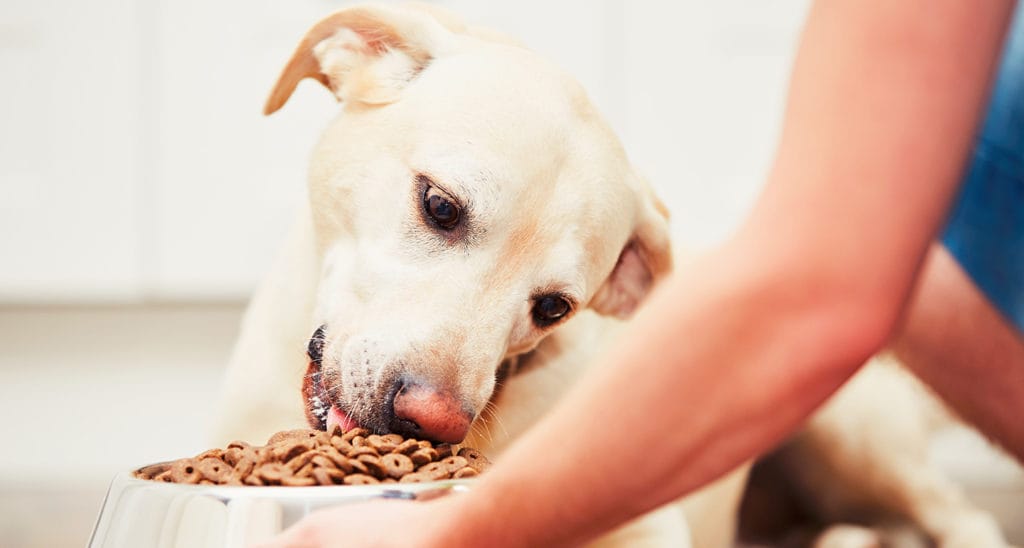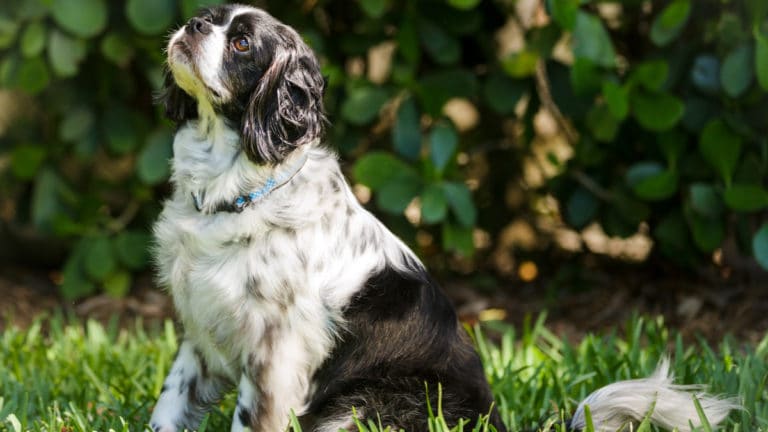Nobody ever said counting calories was fun, but if your dog needs to lose weight, there’s no way around it. Keeping track of their calorie intake can help your pudgy pooch shed unwanted pounds.
“Obesity is still as simple as calories in compared to calories out, so it’s critical to know how many calories your dog is getting everyday,” says Dr. Deborah Linder, a veterinary nutritionist and head of the Tufts Obesity Clinic for Animals.
Here, get ten simple tips for managing your dog’s calories.
Knowledge is Power

Of course, recognizing that your dog has a weight problem is the first step, and it’s not as easy as it sounds. While an estimated 54 percent of all canines are overweight or obese, according to the Association for Pet Obesity Prevention, pet parents often don’t see the signs in their own pets.
“The dog owner’s perception of ideal body weight is skewed,” says Dr. Martha Cline, a diplomate with The American College of Veterinary Nutrition. “Pet owners come to me with problems unrelated to body weight and I see that the pet has excess body weight. Many owners are surprised or they don’t know.”
Looking at a body condition score chart can help you see what a dog at an ideal weight looks like and where your dog fits in, Cline says.
Bone Up on Food Labels

Don’t take recommended feeding guidelines that appear on food labels too literally, Cline says. They are just a starting point that don’t take the needs of individual dogs into consideration. Dogs have different feeding requirements which are based on their energy level and other factors.
Your veterinarian can tell you if your dog is overweight and how many calories they need to lose weight or maintain a healthy body condition.
Once you have a target number, you need to know how many calories are in your dog’s food. Many commercial dog foods include calorie information on the label but if your pet’s food does not, find a product that does. “Stay away from food that doesn’t have calorie information on it,” Cline says.
Measure Your Dog’s Food

Don’t guess at portion sizes. Once you know how many calories your dog needs daily, measure the correct amount of dog food each time you feed them. Cline does not believe in “free choice” feeding, in which owners fill the food bowl with chow and refill it whenever it’s empty without bothering to measure. Very few animals can self regulate their eating, she says.
Separate Yourself from Feeding

It’s hard to say no when your hungry chowhound begs for food. Programmable food dispensers that release pre-measured portions of food can take the pressure off dog parents, Cline says. Food and treat dispensing toys can also make mealtime more fun for your friend.
Keep an Eye on Treats

Too many treats can add up to extra pounds. Calories from treats should make up no more than 10 percent of the animal’s total calorie intake, Cline says. In other words, if your dog only needs 400 calories a day, no more than 40 calories should come from treats or anything else they consume aside from meals.
Your dog won’t mind if you break her treats into pieces. By simply cutting or breaking a treat in two and offering your pet one half at a time, you’ll make her happy and reduce the calorie total.
Offer Lower-Calorie Treats

You might be surprised to know dogs can safely eat and enjoy green beans and other vegetables that are low in starch. A cup of cooked green beans contains just 38 calories, according to the U.S. Department of Agriculture.
Just make sure you don’t offer veggies in place of your pet’s nutritionally balanced diet, Cline says. Veggies should be part of your dog’s daily treat allowance.
Monitor the Humans

Slipping your dog a cheese cube under the table may seem harmless, but it could mess up their diet. Make sure all members of your dog’s family of humans are aware of the diet plan and willing to follow the restrictions on meal servings and treats, Cline says.
Keep a Food Journal

Keeping a written record of every morsel your dog ingests each day can be helpful, especially if there are multiple people in the home who may not be aware of what each family member is feeding the pet, Linder says. “It’s mostly a mindfulness technique to have owners think through everything that their pet gets throughout the day,” she says.
The record can help your veterinarian determine what the actual calorie intake is and provide guidelines for future feeding.
Exercise

While it won’t impact the scale as much as a strictly-enforced, calorie-restricted diet, exercise can help your dog burn calories and give them something other than food to think about.
Dogs can get a workout by walking at a brisk pace, swimming or running with their owners. But be mindful of your dog’s and your own limitations. Don’t push your pet into something that’s too difficult, and schedule a check-up appointment with your veterinarian to make sure they’re healthy enough for exercise.
“Your vet will listen to the heart and lungs and advise if your pet has things to worry about,” Linder says. For example, short-nosed breeds or obese dogs can be predisposed to heat stroke. “Because your pets can’t tell you when they’re overexerted, it’s important for a vet to check their health.”
Aim for Better Health

Just as it does to humans, being overweight can put your pooch at risk for a number of health problems. According to the Association for Pet Obesity Prevention, osteoarthritis, type-2 diabetes, high blood pressure, joint problems and many forms of cancer have been linked to obesity in dogs and being overweight can also shorten a dog’s life by an average of two years.
Calorie counting and dieting require focus and commitment, but the effort can pay off in your dog’s quality of life and the quality time you spend with them.
Lynne Miller is a freelance writer, communications consultant and dog lover. A Chicago native, Lynne lives with her family in Brooklyn, New York.
Share:









